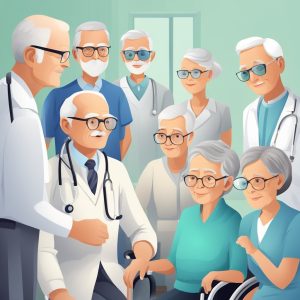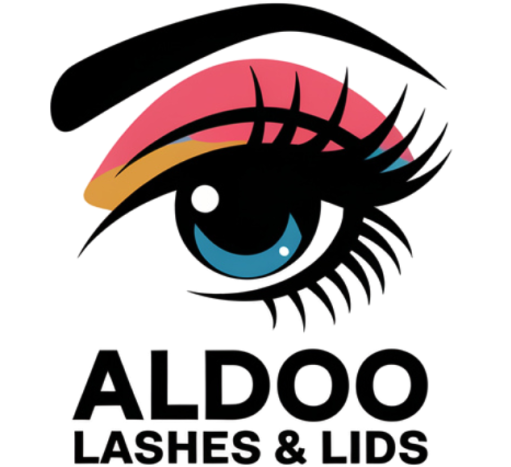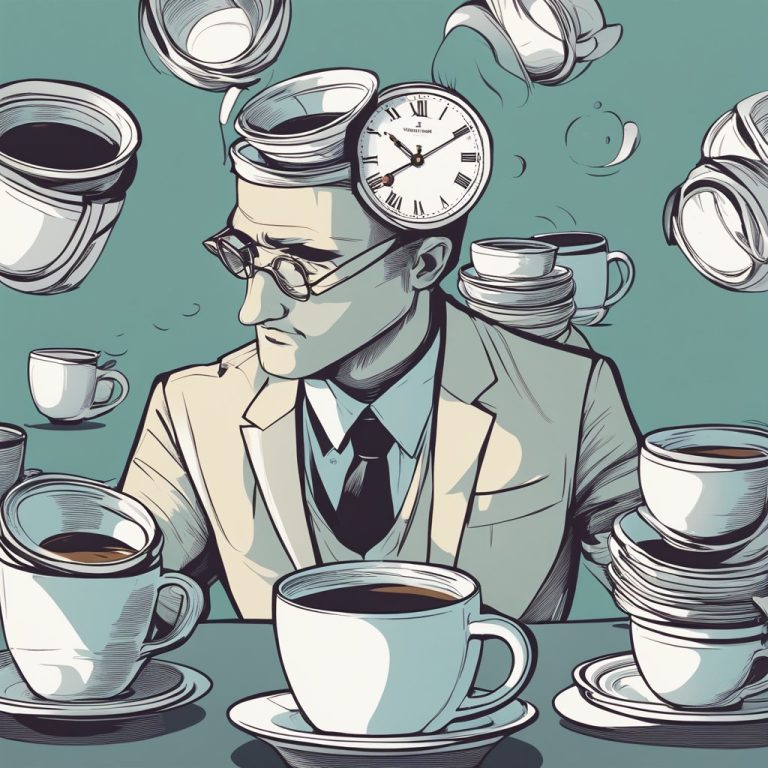What is the Most Common Eye Disease in the Elderly?
What Is the Most Common Eye Disease in the Elderly: Understanding Age-Related Vision Changes

Vision health is a crucial aspect of overall well-being, especially as you age. The most common eye disease in the elderly is age-related macular degeneration (AMD), which affects millions of individuals over the age of 60. It is characterized by the gradual deterioration of the macula, the part of the retina responsible for sharp, central vision. While some forms of AMD progress slowly, others can lead to a rapid loss of vision if untreated.
Age-related macular degeneration (AMD) is the most common cause of vision loss and blindness in people over 60. Early signs are blurred central vision, distorted images, and difficulty seeing colors and details. Advanced AMD causes loss of sharp central vision.
Understanding the aging process and its impacts on your eyes is vital in early detection and management of eye diseases. Other common eye conditions in seniors include cataracts, which cloud the lens of the eye, and glaucoma, a group of eye conditions that damage the optic nerve. Regular check-ups with your eye care professional are critical to catching these conditions in their early stages, as early intervention can significantly slow progression and help maintain your vision.
Key Takeaways
- Age-related macular degeneration is the most prevalent eye disease among the elderly.
- Regular eye exams are critical for early detection of common age-related eye problems.
- Staying informed about eye health can help with the prevention and management of vision loss.
Common Eye Diseases in the Elderly
With advancing age, you’re more likely to experience certain eye conditions that can affect your vision. Regular eye exams are crucial for early detection and effective management of these diseases.
Age-Related Macular Degeneration (AMD)
AMD is a leading cause of vision loss, impacting your central vision. You may experience blurriness or blind spots. There are two types, known as dry AMD and wet AMD. While there is no cure, treatment options like medications and laser treatment can slow progression.
Glaucoma
This eye disease damages your optic nerve, often due to high pressure in the eye. Symptoms might not be noticeable until there’s significant vision loss, which is why regular eye exams are vital. Treatments may include medications or surgery to lower eye pressure.
Cataracts
Cataracts cause cloudy areas in the lens of your eye, leading to blurry vision. Most common in older adults, cataracts are usually treated with surgery that replaces the affected lens.
Diabetic Retinopathy
Associated with diabetes, this condition affects the retina and is a risk for anyone with high blood sugar levels. It can lead to vision loss if not controlled through regular management of diabetes and blood pressure.
Presbyopia
A result of aging, presbyopia occurs when your eye’s lens becomes less flexible, making it hard to focus on close objects. You may need reading glasses or contacts to correct your vision.
Dry Eye Syndrome
Common symptoms of dry eye include discomfort and tearing due to insufficient tear production. Managing the environment with a humidifier or using prescription eye drops can relieve your symptoms.
Low Vision and Blindness
Low vision or blindness can be due to various causes like AMD or glaucoma, resulting in permanent vision loss. Vision rehabilitation and low-vision devices can improve quality of life.
Retinal Disorders
These disorders affect the macula or other parts of the retina. They can create a blind spot or cause vision loss. Treatment depends on the specific condition but may involve medication or surgery.
Corneal Diseases
The cornea’s shape can change or become damaged, leading to vision loss. Corneal diseases may require eye infection treatments or even a cornea transplant.
Eyelid Problems and Conjunctivitis
Eyelid issues and conjunctivitis (an eye infection) can cause irritation and discomfort. Treatment often includes proper hygiene, medications, or, in some cases, surgery.
Prevention and Management
Effective prevention and management of common eye diseases in the elderly hinge on proactive measures and informed health practices. By addressing risk factors and embracing appropriate eye care strategies, you can significantly reduce your likelihood of vision loss.
Early Detection and Regular Eye Examinations
Early detection is crucial in preventing vision impairment. Ensure that you schedule regular eye exams with an ophthalmologist, especially if you have a family history of eye conditions. During these exams, ask for a dilated eye exam, which can reveal the earliest signs of disease.
Lifestyle and Environmental Factors
Your lifestyle choices can heavily influence the health of your eyes. Avoid smoking, monitor your blood pressure regularly, and maintain a balanced diet that supports eye health. Protect your eyes from harmful UV rays by wearing sunglasses when outdoors.
Treatment Options and Support
Understanding your treatment options is vital. Treatment may involve medications, laser procedures, or surgical options, depending on the disease. Seek support from eye care professionals to learn more about treatments that can help prevent vision loss.
Adaptive Strategies and Aids
To assist with changes in vision, utilize low-vision devices and vision rehabilitation services. These aids can compensate for vision loss and help you maintain independence in your daily activities.
Educating Patients and Caregivers
Knowledge is power. It’s important to educate yourself and your caregivers about eye disease. A clear understanding by all parties ensures that you receive the right support and that preventive measures are effectively implemented.
Frequently Asked Questions
In this section, you will find direct answers to common inquiries concerning eye diseases in the elderly. Use these subsections to understand symptoms, diagnosis, prevalent conditions, urgency for medical attention, prevention, and treatment options available for age-related eye diseases.
What are common symptoms that indicate an eye disease in the elderly?
You might notice symptoms like blurred vision, changes in color perception, difficulty adjusting to light levels, or spots and floaters. These symptoms could point to underlying eye issues that warrant a professional evaluation.
How can age-related vision impairment be identified and diagnosed?
A comprehensive eye exam by an eye care professional is your route to identifying and diagnosing vision impairment. During the exam, you’ll undergo tests that check your visual acuity, eye pressure, and the health of your eye’s internal structures.
What are the most prevalent eye conditions that affect the aging population?
Conditions such as age-related macular degeneration, cataract, diabetic retinopathy, and glaucoma rank among the top eye diseases you face as you get older. These diseases can lead to significant vision loss if not managed properly.
Which eye diseases in the elderly require immediate medical attention?
If you experience sudden vision loss, eye pain, seeing flashes of light, new floaters, or a curtain-like obstruction of your vision, seek immediate medical help. These symptoms may signal a retinal detachment, acute glaucoma, or other serious conditions.
Is it possible to prevent or slow the progression of common eye diseases associated with aging?
While some factors are beyond your control, you can reduce your risk by maintaining a healthy lifestyle, protecting your eyes from UV radiation, and managing systemic conditions like diabetes and high blood pressure. Regular eye exams are also crucial for early detection and intervention.
What treatments are available for the major eye diseases commonly found in older adults?
Treatment options vary depending on the condition—ranging from prescription glasses for refractive errors to surgery for cataracts. Treatments like injections for wet macular degeneration or laser therapy for glaucoma can help manage symptoms and slow disease progression.







